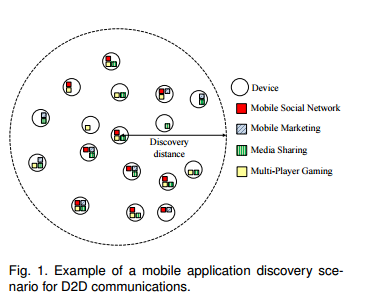Before 2020, smartphones are expected to have built-in device-to-device (D2D) capabilities for more-effective app sharing, game playing, and geo-targeting. As the wireless world looks ahead to these advancements, a recent IEEE study consults historic algorithms to improve the speed and efficiency of D2D discovery.
Our technique is uniquely multi-disciplinary. We had to learn coding typically used in more conventional database settings and apply it to wireless engineering.
D2D communications, widely recognized as underpinnings of the evolving 5G cellular network, offer as many wireless engineering benefits as they do marketing and entertainment benefits for consumers.
Traditionally, when one person calls another, the signal goes from the sender to a base station and from the base station to the recipient. This can cause all sorts of bottlenecks, as anyone who has struggled to get signals in, say, a busy airport at a peak travel hour knows.
D2D allows the sender to connect directly with the receiver via low transmission power, reducing interference jams and delays caused by third-party infrastructure. This not only creates better throughput, but it also frees up bandwidth for other uses.
“D2D communications is like adding a new lane to the highway,” explains a lead researcher, Ekram Hossain.
But the actual act of locating the proper D2D devices in the same vicinity – which is constantly changing – still consumes a lot of memory and bandwidth.

To solve for this, IEEE researchers in Seoul, Korea and Manitoba, Canada turned to statistical coding approaches that have been around for years. They proposed a discovery protocol using hash functions and Bloom filters, which are methods for compressing information into concise, easy-to-digest bits. A hash function maps out arbitrary data against fixed sizes for easy verification, retrieval, and matching, and was first proposed in the 1950s. A Bloom filter, which was discovered in the 1970s, is a statistical algorithm that identifies whether an element is present in a set, quickly and efficiently. When applied to D2D communications, they can convert data into virtual “fingerprints” for improved discovery process.
“Our technique is uniquely multi-disciplinary,” said Hossain. “We had to learn coding typically used in more conventional database settings and apply it to wireless engineering. Everyone wants devices to get smarter, and D2D is the next step to more intelligent and resourceful mobile communications.”
Normally it would take a very long time to simulate this approach with roaming devices and countless memory bits, but the team once again refreshed an existing solution and created a new mash-up for new settings. They used a complex mathematical method of analyzing random spatial patterns called stochastic geometry, a term which surfaced in the 1960s. Through the use of stochastic geometry, the team was able to prove that their discovery protocol greatly outperforms nonfiltering ones.
From here, it’s up to the manufacturers to determine their own filtering techniques.
You can also find more articles about “device-to-device communications” in IEEE Xplore.





